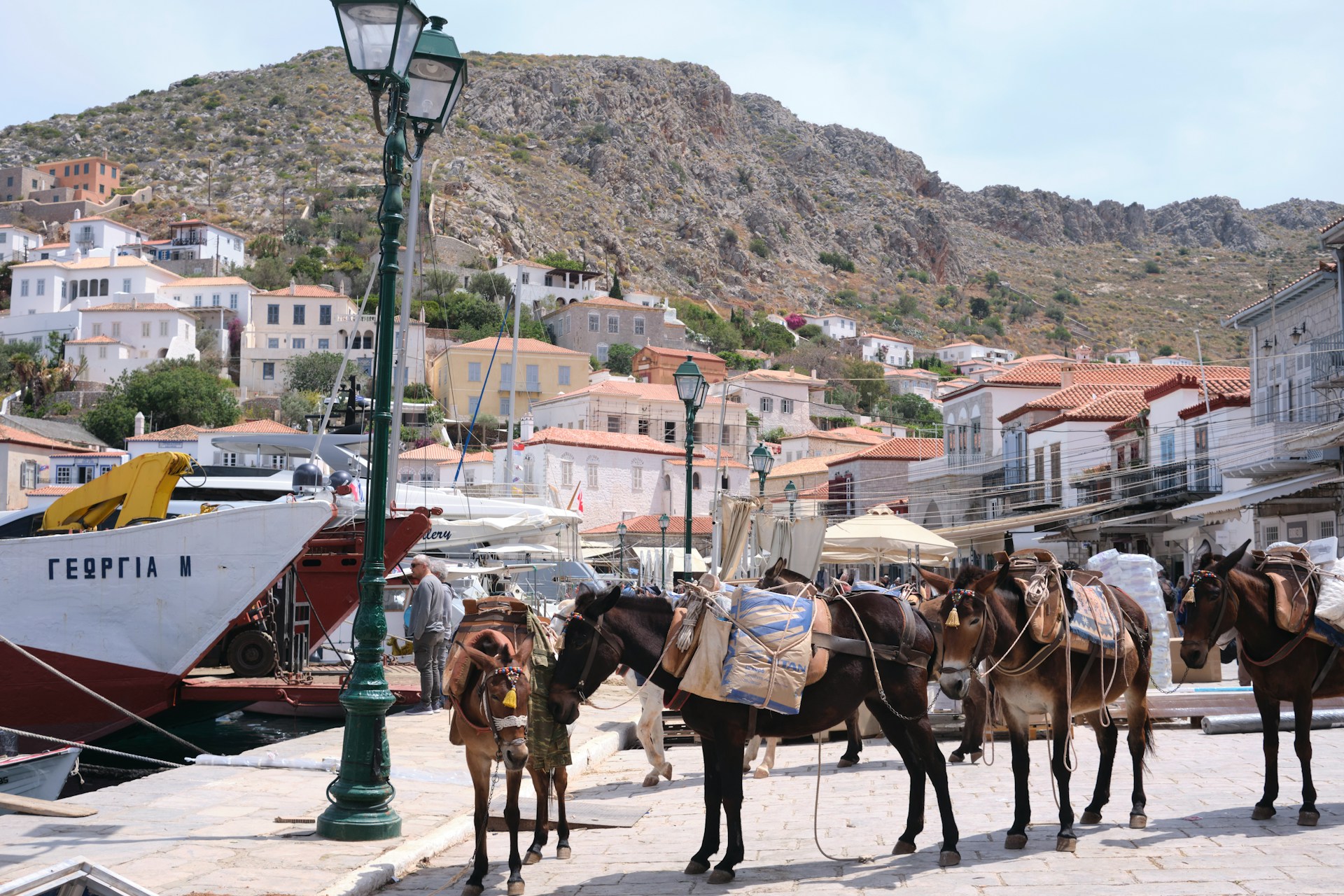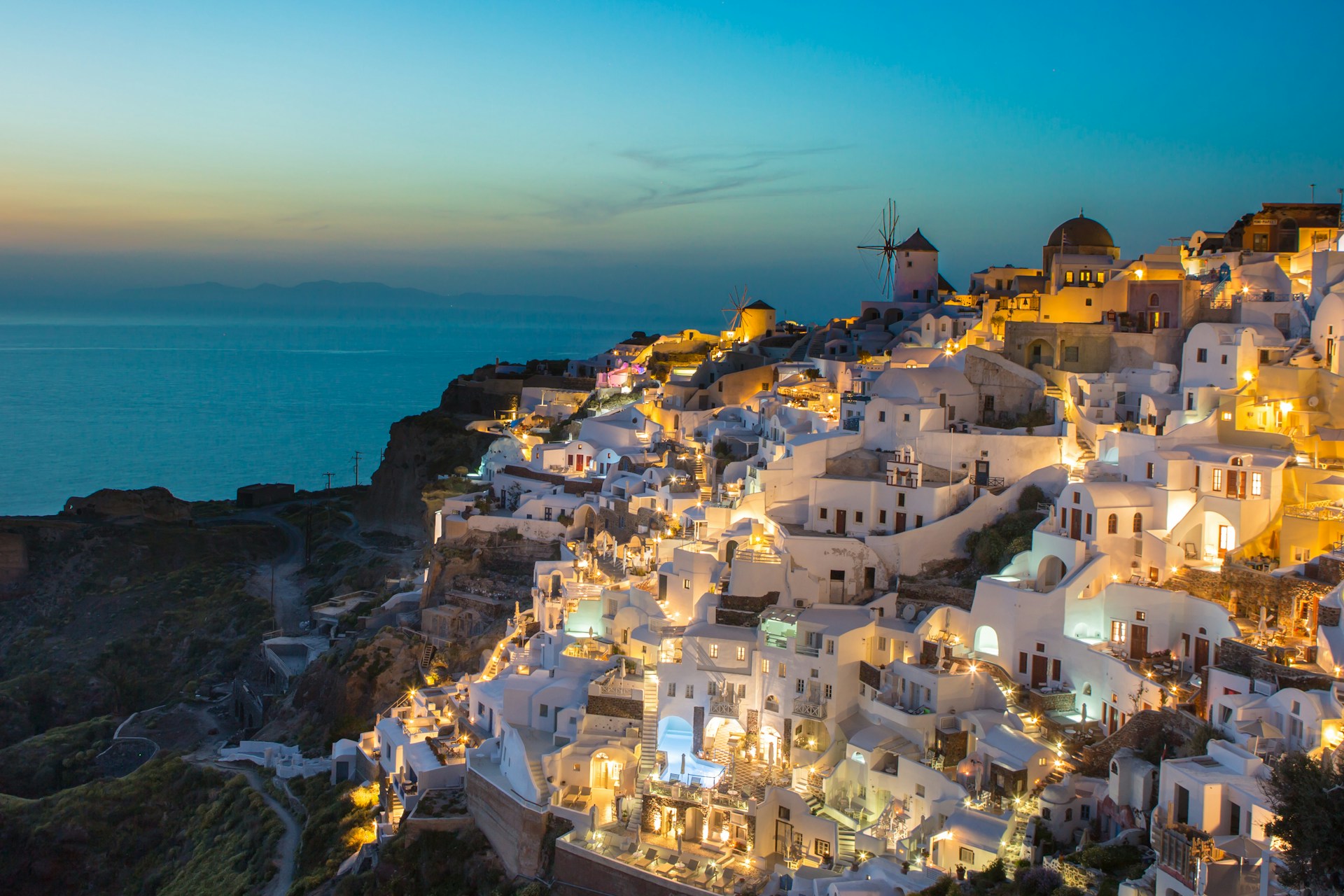Did you know that there are Mediterranean islands that are still car-free to this day? These destinations offer a step back in time, where donkeys, bicycles, boats, and even electric carts replace cars.
If you are looking for a vacation that will allow you to unwind without the constant hum of engines, car-free islands will give you that rare sense of calm and authenticity. Let’s take a look at some of these rare destinations below.

Hydra has been known to be car-free for decades. Cars and motorbikes are banned, which gives the island its peaceful atmosphere. Donkeys, horses, and water taxis are the main forms of transport. This restriction not only protects Hydra’s narrow cobbled streets but also helps preserve its traditional charm.
It gives visitors a unique experience, walking along quiet harbour paths without traffic, watching locals carry goods by mule, and enjoying an island where the loudest sounds are waves, chatter, and footsteps. It is perfect for travellers looking for peace.
Although not in the central Mediterranean, Culatra, in Portugal, is another car-free island. Accessible only by boat from Faro, the island has no cars and no roads. Locals get around on foot or by small carts, while visitors walk along sandy paths and wooden walkways.
The island feels timeless. Fishing remains the main livelihood, and beaches stretch on for miles without interruption. Culatra offers a glimpse of traditional island life that is rare to find in southern Europe today.
Like Hydra, Spetses has long limited the use of cars. In the main town and along the waterfront, cars are banned, creating a peaceful environment where horse-drawn carriages, bicycles, and mopeds are the main ways to get around.
Some vehicles are on the roads outside of town, but the restrictions mean the historic centre remains calm and peaceful, prioritising travel by foot.
Procida, near Naples, is much smaller and still retains its authentic village feel. While cars are not entirely banned, strict limitations apply. Only residents are allowed to use them, and the rules are enforced to keep traffic minimal. Visitors usually explore on foot, by bike, or with small electric buses.
The island has pastel-coloured houses, fishing boats, and quiet harbours that you can enjoy peacefully without the distraction of busy roads.
There is not one single reason why certain Mediterranean islands have banned or restricted cars. In most cases, it comes down to a mix of geography, tradition, and a desire to protect local life.
Many islands, like Hydra or Culatra, are simply too small or too rugged for cars. Their narrow lanes and steep paths were never designed for vehicles, so walking, cycling, or riding donkeys remains the only practical way to move around.
Some islands, on the other hand, want to keep their historic character intact. The sound of traffic or the sight of busy roads would completely change the experience of places like Spetses or Hydra, where life has always moved at a slower pace.
Others are keeping it car-free to protect the environment. Islands are fragile ecosystems, and banning cars helps reduce pollution, noise, and overcrowding. Not to mention that car-free environments are a selling point for tourism. Visitors often come specifically to enjoy their peace, safety, and authenticity.
For travellers, these islands mean more authentic experiences. A chance to slow down, where daily life feels less rushed. Walking through car-free alleys, hopping on a boat to reach a beach, or watching fishermen unload their catch without the sound of engines in the background are simple joys that remind us of what true nature, calm, and peace look like.


If you want the latest information on the best Hotel Executive Club Lounges, Hotel Kids Clubs and other travel information, be sure to sign up for our free newsletter full of tips and great travel ideas.